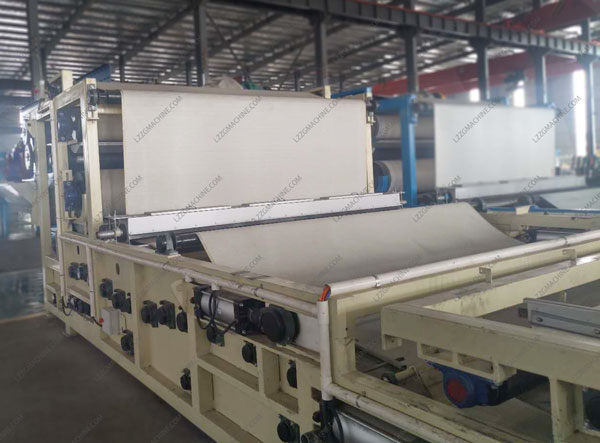Environmental pollution caused by tailings pond leakage
 April.01,2020
April.01,2020
The tailings of the mining site not only occupy a large amount of land, but also cause severe pollution to the environment. In order to improve the utilization of mineral resources, extend the useful life, and also protect the ecological environment. People pay more and more attention to the comprehensive utilization and management of tailings. LZZG tailings processing equipment includes deep cone concentration tanks, belt filter presses, tailings dewatering screens, etc.

At about 13:40 on March 28, Yichun Luming Mining Co., Ltd.’s molybdenum tailings reservoir No. 4 overflow shaft tilted, resulting in increased water discharge and accompanying tailings sand, causing pollution to the water environment. After day and night construction, on March 31, the leaking point of the overflow well was blocked.
Xinhua News Agency reporter obtained the water quality monitoring situation of Yichun Luming mining tailings leakage incident from Heilongjiang Province’s Department of Ecology and Environment on April 1st. According to the monitoring at 14:00 on March 31st, the front of the sewage group has reached the head of the Shuanghe canal across the Hulan River in Yichun In the section (110 kilometers downstream of the incident), according to the monitoring, the molybdenum exceeded the standard by 1.8 times, the COD exceeded the standard by 4.7 times, and the petroleum category exceeded the standard by 0.4 times.
According to the Heilongjiang Provincial Department of Eco-Environment, the Heilongjiang Provincial Department of Eco-Environment organized the monitoring of the surface water environment quality at the accident site and downstream. At 14:00 on March 31, five of the 13 monitoring sections exceeded the standard limit for molybdenum, COD and petroleum projects, and other points were below the standard limit.
Among them, the molybdenum at the incident was 7.5 times higher than the standard, the oil was 1.4 times higher than the standard, and the COD was 0.05 times higher than the standard; the entrepreneurial section located 67 kilometers downstream of the incident was 19.6 times higher than the standard, and the petroleum level was 3.2 times higher than the standard. The COD was lower than the standard limit; The molybdenum in the upper section of the Yijimi Estuary, 77 kilometers downstream of the incident, was 22.7 times higher than the standard, the oil was 3.4 times higher, and the COD was 0.6 times higher than the standard. The cross section of the Yijimi Estuary, Tieli City, 99 kilometers downstream of the incident. Molybdenum exceeded the standard by 14.3 times, petroleum exceeded the standard by 1.4 times, and COD exceeded the standard by 1.0 times.





